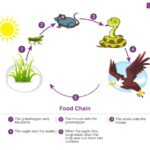The Supplemental Nutrition Assistance Program (SNAP), often referred to as food stamps, is a federal program designed to combat food insecurity by providing low-income individuals and families with financial assistance to purchase groceries. This guide breaks down the requirements and eligibility criteria for SNAP, helping you understand What Do You Need To Get Food Stamps and how to navigate the application process.
SNAP benefits are typically distributed via an Electronic Benefit Transfer (EBT) card, which functions similarly to a debit card and can be used at authorized retailers to purchase eligible food items. These benefits aim to ensure access to nutritious food and contribute to overall health and well-being.
Understanding SNAP Eligibility: Who Qualifies?
SNAP eligibility hinges primarily on income and household size, but other factors can also influence your ability to receive benefits.
- Income Limits: SNAP has specific income limits that vary depending on your household size. Gross monthly income (before deductions) must typically be at or below 130% of the federal poverty line. Net income (after certain deductions) must be at or below the poverty line.
- Household Definition: SNAP defines a household as individuals who live together and purchase and prepare meals together.
- Work Requirements: Able-bodied adults (typically those aged 16-59) without dependents may be subject to work requirements, such as actively seeking employment or participating in a work program. There are exceptions for individuals with disabilities or those who are pregnant.
Detailed Income Requirements for SNAP
To be eligible for SNAP, your household income must fall within certain limits. These limits are based on the federal poverty guidelines and are adjusted annually. Here’s a general overview:
| Family size | Maximum monthly income |
|---|---|
| 1 | $ 2,005 |
| 2 | $ 2,712 |
| 3 | $ 3,419 |
| 4 | $ 4,125 |
| 5 | $ 4,832 |
| For each additional person, add: | $ 707 |
Note: These figures are examples and may vary based on state and federal guidelines. Always check with your local SNAP office for the most up-to-date information.
What Can You Buy with SNAP Benefits?
SNAP benefits can be used to purchase a variety of food items, including:
- Fruits and vegetables
- Meat, poultry, and fish
- Dairy products
- Breads and cereals
- Snack foods and non-alcoholic beverages
- Seeds and plants to grow food in a home garden
Restrictions on SNAP Purchases:
SNAP benefits cannot be used to purchase:
- Alcoholic beverages
- Tobacco products
- Non-food items (e.g., household supplies, personal hygiene products)
- Hot, prepared foods that are ready to eat at the point of sale
Work Requirements and Exemptions
Most able-bodied adults between the ages of 16 and 59 are required to meet certain work requirements to be eligible for SNAP benefits. These requirements may include:
- Registering for work
- Actively seeking employment
- Participating in a work program
However, certain individuals are exempt from these work requirements, including:
- Those who are physically or mentally unfit for work
- Pregnant women
- Those caring for a dependent child under the age of six
- Students enrolled at least half-time in a recognized school
How to Apply for SNAP
The application process for SNAP varies by state, but generally involves the following steps:
- Contact Your Local SNAP Office: Contact your state or local SNAP office to obtain an application and learn about specific requirements in your area.
- Complete the Application: Fill out the SNAP application accurately and completely. Provide all requested information, including details about your income, household size, and expenses.
- Submit Documentation: Gather and submit any required documentation, such as proof of income, identification, and residency.
- Attend an Interview: You may be required to attend an interview with a SNAP caseworker to review your application and answer any questions.
- Receive a Determination: After reviewing your application, the SNAP office will determine your eligibility and, if approved, the amount of benefits you will receive.
What Documents Do You Need to Apply for Food Stamps?
Gathering the necessary documentation is a crucial step in the SNAP application process. Common documents required include:
- Proof of Identity: Driver’s license, state-issued ID card, passport, or other government-issued identification.
- Proof of Residency: Lease agreement, utility bill, or other documentation verifying your address.
- Proof of Income: Pay stubs, tax returns, or other documentation showing your current income.
- Proof of Expenses: Rent or mortgage statements, utility bills, medical bills, and child care expenses.
- Social Security Numbers: Social Security cards for all members of your household.
Additional Resources and Information
Navigating the SNAP program can be complex. Here are some helpful resources:
- USDA SNAP Website: The official website of the United States Department of Agriculture (USDA) SNAP program provides comprehensive information about eligibility, benefits, and application procedures.
- State SNAP Agencies: Each state has its own SNAP agency that administers the program locally. Contact your state agency for specific information about SNAP in your area.
- Local Food Banks and Pantries: Local food banks and pantries can provide immediate food assistance and connect you with other resources in your community.
Conclusion
Understanding what do you need to get food stamps is the first step towards accessing this vital resource. By familiarizing yourself with the eligibility requirements, application process, and available resources, you can increase your chances of receiving SNAP benefits and ensuring food security for yourself and your family. If you are struggling to afford food, don’t hesitate to explore the SNAP program and seek assistance from your local SNAP office.
